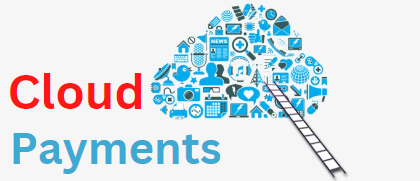Cloud Payments for Educational Institutions: Embracing the Future of Payments in Education
In today’s digital age, cloud-based systems have revolutionized various industries, including education. Cloud payments have emerged as a game-changer for educational institutions, streamlining financial processes and enhancing the student experience. This article explores the benefits, challenges, and best practices associated with implementing cloud payments in educational institutions.
Benefits of Cloud Payments for Educational Institutions
Cloud payment systems offer several substantial benefits to educational institutions, streamlining their financial operations and enhancing the overall efficiency of their administrative processes. Here’s a comprehensive look at how adopting cloud payments can be advantageous for schools, colleges, and universities.
1. Enhanced Security

Cloud payment solutions employ advanced security measures such as encryption, tokenization, and fraud detection algorithms, which are often more robust than traditional payment methods. This high level of security helps protect sensitive financial data, reducing the risk of data breaches that can compromise the institution’s and students’ privacy.
2. Reduced Costs

By using cloud payment systems, educational institutions can reduce the costs associated with manual payment processing. These systems eliminate the need for physical infrastructure like payment counters and reduce the manpower needed for handling cash or checks. Additionally, cloud payments can lower transaction fees compared to traditional banking services.
3. Improved Efficiency

Cloud payment platforms streamline the payment process, making it faster and more efficient. Payments are processed almost instantaneously, which accelerates the flow of funds and simplifies the reconciliation process. This efficiency is crucial during enrollment periods when institutions handle a high volume of transactions.
4. Accessibility and Convenience
With cloud payments, students and parents can make payments anytime and from anywhere, using various devices such as smartphones, tablets, or computers. This flexibility is particularly beneficial for international students who can make payments in their local currencies and from their home countries without facing the hurdles of traditional banking systems.
5. Automated Billing and Record-Keeping
Cloud payment systems often come with integrated billing and accounting features that automate many aspects of financial management. They can generate invoices, track payments in real-time, and provide detailed financial reports. This automation reduces administrative burdens and minimizes errors associated with manual record-keeping.
6. Scalability
As educational institutions grow, their financial transaction volumes and complexity can increase. Cloud payment systems are inherently scalable, allowing them to handle increased transaction loads without the need for significant additional investments in infrastructure.
7. Environmental Impact
Switching to cloud payments helps reduce the use of paper, as digital transactions negate the need for paper bills and checks. This shift not only lowers the institutions’ carbon footprint but also aligns with broader environmental sustainability goals.
8. Enhanced Student Experience
The convenience and security of cloud payments contribute to a better overall student experience. Easy and reliable payment options ensure that students can focus more on their studies and less on administrative challenges related to payments.
Security and Privacy in Cloud Payments for Educational Institutions
Security and privacy are paramount when it comes to handling financial transactions in educational institutions. Cloud payment systems offer numerous advantages in these areas, ensuring that transactions are both secure and private. Here’s a detailed exploration of the security and privacy aspects of cloud payments in the educational sector.
1. Data Encryption
One of the foundational features of cloud payment systems is the use of advanced encryption protocols. These protocols ensure that all data transmitted between parties—including sensitive financial information—is encrypted during transmission and storage. This makes the data unreadable to unauthorized users, significantly reducing the risk of data breaches.
2. Tokenization
Tokenization is another critical security feature used in cloud payment systems. It involves replacing sensitive data elements, like credit card numbers, with non-sensitive equivalents called tokens. These tokens can be used in the transaction process without exposing actual bank details, thereby enhancing security.
3. Secure Access Controls
Cloud payment solutions implement stringent access controls, ensuring that only authorized personnel can access the payment system. Multi-factor authentication (MFA), biometric verification, and role-based access controls are common methods used to strengthen security and protect against unauthorized access.
4. Compliance with Standards
Cloud payment providers typically comply with international security standards such as PCI DSS (Payment Card Industry Data Security Standard), which sets requirements for security management, policies, procedures, network architecture, and software design. Compliance helps ensure that educational institutions are adhering to best practices in payment security.
5. Regular Security Audits
To maintain high security and compliance standards, cloud payment systems undergo regular security audits. These audits are conducted by third-party security experts and help identify and rectify any potential vulnerabilities in the system.
6. Fraud Detection and Prevention
Modern cloud payment systems incorporate sophisticated fraud detection tools that monitor transactions in real-time for suspicious activity. These systems can alert administrators to potentially fraudulent transactions, helping to prevent financial loss before it occurs.
7. Privacy Policies
Privacy is as crucial as security. Cloud payment providers are required to follow strict privacy regulations, such as GDPR in Europe or CCPA in California, which mandate the protection of personal data. These regulations ensure that institutions manage and protect student and parent data responsibly.
8. Transparent Data Management
Educational institutions can leverage cloud payment systems to maintain transparent and auditable records of all transactions. This transparency not only aids in financial management but also ensures that all stakeholders can trust the institution to manage their data securely.
9. Continuous Improvement
The field of cybersecurity is continually evolving, and cloud payment providers must constantly update their systems with the latest security technologies and practices. This commitment to continuous improvement helps protect against new and emerging threats.
Integration of Cloud Payments with Student Information Systems
The integration of cloud payment systems with Student Information Systems (SIS) marks a significant advancement in the administration of educational institutions. This convergence brings a host of efficiencies, enhancing the management of student data and financial transactions. Here’s a detailed analysis of how cloud payments can be seamlessly integrated with Student Information Systems to benefit educational institutions.
1. Streamlined Administrative Processes
Integrating cloud payment solutions with an SIS allows for the consolidation of student data and payment information into a single platform. This integration simplifies administrative tasks such as enrollment, tuition fee collection, and financial aid disbursement, reducing the need for multiple systems and minimizing the potential for errors.
2. Real-Time Financial Data
With cloud payments integrated into the SIS, financial data is updated in real-time. This ensures that administrators have immediate access to current financial information, facilitating better financial planning and budget management. It also aids in quick resolution of payment discrepancies and provides up-to-date billing information to students and parents.
3. Enhanced User Experience
For students and parents, the integration of payment systems with an SIS means a more cohesive user experience. They can access payment portals directly through the SIS interface where they already manage other aspects of the educational experience, such as checking grades or updating personal information. This unified approach reduces complexity and enhances satisfaction.
4. Improved Payment Security
By integrating cloud payment systems with SIS, educational institutions benefit from the advanced security features of cloud payments. This setup not only provides robust data encryption and fraud prevention mechanisms but also ensures that all payment activities are logged and monitored within the system, enhancing overall security.
5. Automated Billing and Notifications
Automated billing is another significant advantage of integrating cloud payments with SIS. Institutions can automate invoicing based on the enrollment data in the SIS, ensuring accurate and timely billing. Automated notifications about upcoming or overdue payments can also be sent, improving collection rates and financial liquidity.
6. Compliance and Reporting
This integration helps institutions comply with various financial and educational regulations. Automated reports generated from the SIS can include detailed financial records, aiding in compliance with standards such as PCI DSS for payments and FERPA for educational data privacy. These reports are crucial during audits and for internal reviews.
7. Scalability and Flexibility
As institutions grow, their SIS and payment processing needs evolve. Cloud-based systems are inherently scalable, allowing easy adjustments to handle increased transaction volumes or to introduce new payment plans and services without significant system overhauls.
8. Cost Efficiency
Integrating cloud payments with SIS can lead to significant cost savings. It reduces the need for manual processing and allows for better allocation of administrative staff, who can focus on more strategic tasks rather than routine data entry or payment processing.
9. Data Insights and Analytics
With both student information and payment data in one place, educational institutions can leverage analytics to gain insights into student behavior and financial trends. These insights can inform policy changes, help in identifying financial aid needs, and optimize tuition pricing strategies.
Streamlining Accounts Receivable with Cloud Payments
Streamlining accounts receivable (AR) is crucial for any organization, including educational institutions, to maintain financial health and operational efficiency. Cloud payment solutions offer a modern approach to managing AR processes, enhancing speed, accuracy, and user satisfaction. Here’s a comprehensive look at how cloud payments can streamline accounts receivable.
1. Automation of Invoicing and Collections
Cloud payment systems automate many aspects of the AR process, starting with invoicing. These systems can generate and send digital invoices automatically based on predefined schedules or triggers, such as enrollment in a new semester. Automation extends to collections as well, with systems sending reminders and updates to payers, reducing the time and effort spent on follow-ups.
2. Real-Time Payment Processing
One of the most significant advantages of cloud payments is the ability to process transactions in real-time. This immediacy ensures that payments are reflected in the accounts immediately upon receipt, which not only improves cash flow but also reduces the administrative burden of manually reconciling accounts.
3. Enhanced Payment Accessibility
Cloud payment platforms enable payers to settle their invoices through multiple channels, whether via credit card, bank transfer, or mobile payments. This flexibility increases the likelihood of timely payments as payers can choose the most convenient method for them, further streamlining the receivables process.
4. Reduced Errors and Discrepancies
Manual processes are often prone to errors, from data entry mistakes to missed payments. Cloud payment systems minimize these risks by automating data capture and integrating directly with accounting software. This integration ensures accuracy in records and financial reports, reducing the potential for discrepancies and the time spent on rectifying them.
5. Improved Security and Compliance
Security concerns, especially regarding financial transactions, are paramount. Cloud payment systems are built with stringent security measures, including encryption, tokenization, and compliance with regulations such as PCI DSS. This secure environment helps prevent fraud and builds trust among payers, which is crucial for maintaining a steady flow of receivables.
6. Scalable Solutions
As organizations grow, their financial transactions and customer base may expand, leading to more complex AR processes. Cloud payment systems are inherently scalable, capable of handling increased transaction volumes and more complex financial management needs without significant additional investment.
7. Better Financial Visibility and Reporting
Cloud payments enhance visibility into the financial status of an organization. These systems can provide detailed reports and analytics on payment trends, payer behavior, and cash flow, enabling better financial decision-making. Real-time data access allows organizations to react quickly to financial challenges and opportunities.
8. Enhanced Payer Satisfaction
By offering a seamless and flexible payment experience, cloud payment systems enhance payer satisfaction. Easy payment processes, timely invoicing, and multiple payment options can lead to higher satisfaction levels, which are crucial for maintaining long-term relationships and steady revenue streams.
Enhancing the Student Experience with Cloud Payments
Enhancing the student experience is a critical goal for educational institutions aiming to improve both educational outcomes and student satisfaction. Integrating cloud payment solutions into the student services infrastructure can significantly contribute to achieving this goal. Here’s an in-depth look at how cloud payments can enhance the student experience.
1. Simplified Payment Processes
Cloud payments streamline the process of paying tuition and other fees by offering a simple, online interface where students can complete transactions quickly and securely. This convenience is especially appreciated by students who are accustomed to digital solutions and expect seamless interactions in all facets of their academic environment.
2. Flexible Payment Options
Cloud payment systems allow students to choose from multiple payment methods, including credit cards, debit cards, bank transfers, and digital wallets. Moreover, these platforms can support payment plans, enabling students to spread tuition payments over several months, which can alleviate financial stress and make education more accessible.
3. Immediate Payment Confirmation
Students benefit from instant confirmation of their payments, which eliminates the uncertainty and anxiety associated with traditional payment methods that may involve delays in processing. Immediate confirmation via email or mobile alerts reassures students that their financial obligations have been met, allowing them to focus more on their studies.
4. 24/7 Accessibility
Cloud payment platforms are available around the clock, unlike traditional payment offices with limited operating hours. This 24/7 accessibility ensures that students can manage their payments at their convenience, perhaps after hours of study or from different time zones if they are international or remote learners.
5. Enhanced Security
Security is a top concern for students making online transactions. Cloud payment systems utilize advanced security technologies such as encryption, tokenization, and fraud detection algorithms to protect sensitive financial data. This robust security framework helps build trust and confidence among students and their families.
6. Integration with Student Portals
Many cloud payment solutions can be integrated directly into student portals, where students already access academic resources, course enrollments, and personal data. This integration provides a unified user experience that can streamline various administrative tasks and reduce the hassle of managing multiple accounts or websites.
7. Reduced Administrative Burdens
Cloud payments significantly reduce the need for manual handling of payments by school administrative staff, which can lead to fewer errors and faster resolution of any payment-related issues. This efficiency not only improves the student experience by minimizing potential frustrations but also allows staff to focus more on student-facing services rather than back-office tasks.
8. Transparent Financial Tracking
Students can track their payment history, view outstanding balances, and manage future payments through user-friendly dashboards provided by cloud payment systems. This transparency in financial transactions helps students stay informed about their financial status and plan their finances better.
9. Sustainable Payment Practices
Using cloud-based payment systems reduces the need for paper-based processes, supporting sustainability initiatives within educational institutions. This eco-friendly approach aligns with the values of many students who prioritize environmental sustainability.
Cost Savings and Efficiency with Cloud Payments
Implementing cloud payment systems in educational institutions can lead to significant cost savings and improved operational efficiency. Some key areas of cost savings include:
- Reduced Administrative Costs: Cloud payment systems automate manual processes, reducing the need for administrative staff to handle payment-related tasks. This frees up resources that can be allocated to other critical areas.
- Paperless Environment: Cloud payments eliminate the need for paper-based invoices, receipts, and checks. This reduces printing and mailing costs, as well as the environmental impact associated with paper consumption.
- Minimized Errors and Discrepancies: Cloud payment systems minimize errors and discrepancies through automated processes and real-time data syncing. This reduces the need for manual intervention and rectification, saving time and resources.
- Lower Transaction Costs: Cloud payment systems often offer competitive transaction rates compared to traditional payment methods. Educational institutions can negotiate favorable rates based on transaction volumes, resulting in cost savings.
Challenges and Considerations in Implementing Cloud Payments
While cloud payments offer numerous benefits, educational institutions must consider certain challenges and factors before implementing them. Some key considerations include:
- Data Security and Privacy: Educational institutions must ensure that cloud payment systems comply with industry standards and regulations to protect sensitive payment data. Conducting thorough security assessments and due diligence is crucial.
- Integration Complexity: Integrating cloud payment systems with existing student information systems or financial management systems may require technical expertise and coordination. Institutions should carefully evaluate compatibility and seek vendor support if needed.
- Change Management: Implementing cloud payment systems involves a change in processes and workflows. Institutions must invest in training and communication to ensure smooth adoption and minimize resistance from staff members and stakeholders.
- Vendor Selection: Choosing the right cloud payment vendor is critical. Institutions should evaluate factors such as reputation, reliability, customer support, and scalability before making a decision.
Best Practices for Successful Cloud Payment Implementation
To ensure a successful implementation of cloud payment systems, educational institutions should follow these best practices:
- Define Clear Objectives: Clearly define the goals and objectives of implementing cloud payments, such as improving efficiency, enhancing the student experience, or reducing costs. This helps in aligning the implementation strategy with the institution’s overall vision.
- Conduct a Needs Assessment: Evaluate the specific needs and requirements of the institution, considering factors such as payment volume, integration capabilities, and reporting needs. This helps in selecting the most suitable cloud payment solution.
- Engage Stakeholders: Involve key stakeholders, including staff members, students, parents, and IT personnel, in the decision-making process. Their input and feedback can provide valuable insights and ensure buy-in from all parties involved.
- Plan for Change Management: Develop a comprehensive change management plan that includes training programs, communication strategies, and support mechanisms. This helps in preparing staff members and stakeholders for the transition to cloud payments.
- Test and Pilot: Before implementing cloud payments institution-wide, conduct thorough testing and pilot programs to identify any potential issues or areas for improvement. This allows for fine-tuning and ensures a smooth transition.
- Monitor and Evaluate: Continuously monitor the performance of the cloud payment system and gather feedback from users. Regularly evaluate the system’s effectiveness in achieving the defined objectives and make necessary adjustments as required.
Frequently Asked Questions
Q.1: What is a cloud payment system?
A cloud payment system is a digital platform that enables educational institutions to accept and process payments securely through cloud-based technology. It automates payment processes, offers multiple payment options, and integrates with student information systems.
Q.2: How does cloud payment integration with student information systems benefit educational institutions?
Integration with student information systems allows for real-time syncing of payment data, automated invoicing, streamlined reconciliation, and personalized communication. It improves efficiency, accuracy, and the overall student experience.
Q.3: Are cloud payment systems secure?
Cloud payment systems employ advanced security measures, such as encryption, tokenization, and compliance with industry standards like PCI DSS. These measures ensure the security and privacy of payment data.
Q.4: Can cloud payments help educational institutions save costs?
Yes, cloud payments can lead to cost savings by reducing administrative costs, eliminating paper-based processes, minimizing errors, and negotiating competitive transaction rates.
Q.5: What challenges should educational institutions consider before implementing cloud payments?
Educational institutions should consider factors such as data security and privacy, integration complexity, change management, and vendor selection before implementing cloud payment systems.
Conclusion
Cloud payments have revolutionized financial management in educational institutions, offering numerous benefits such as enhanced efficiency, improved cash flow, increased payment options, and real-time reporting. By addressing security concerns, integrating with student information systems, streamlining accounts receivable, and enhancing the student experience, cloud payments have become an essential tool for educational institutions. While challenges exist, following best practices and considering key factors can ensure a successful implementation. As educational institutions embrace the future of payments, they can unlock the full potential of cloud-based systems to streamline financial processes, improve operational efficiency, and provide a seamless payment experience for students and parents.











